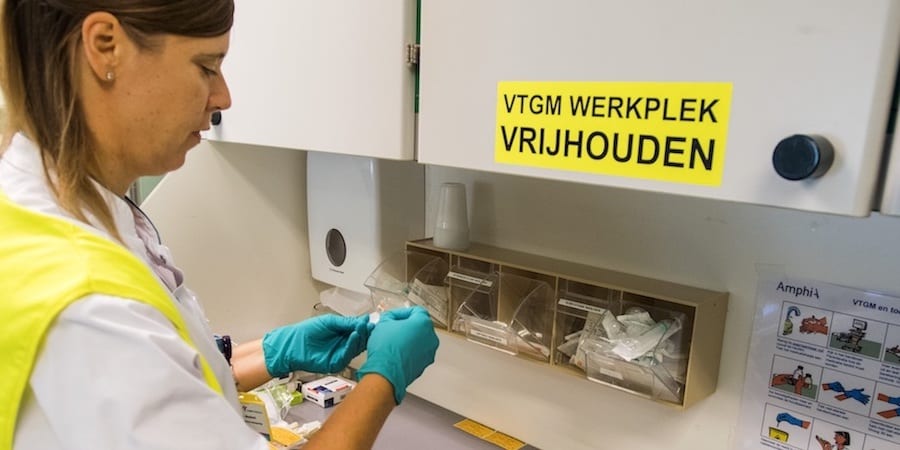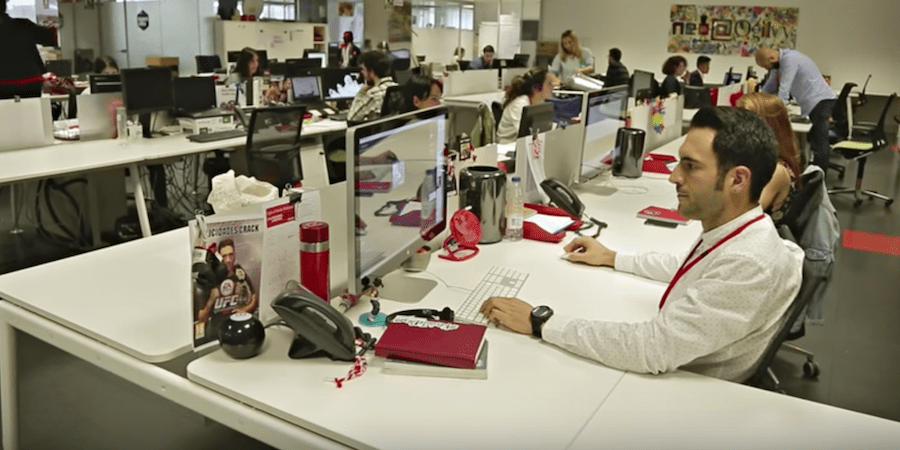
Auditing UK government’s adoption of lean thinking
FEATURE - Britain’s National Audit Office looks at how well taxpayer money is spent, gaining invaluable insight into the use of lean management in central government.
Words: Alec Steel, Head of Operations and Process Management specialism, National Audit Office
Government accountability is a foundational element of democracy, and something we seem to have a long tradition of here in England.
From the Magna Carta, sealed by King John and the feudal barons in 1215, to the Bill of Rights of 1689, the steps towards limiting the monarch’s arbitrary power have stretched for several centuries and eventually led to the system we have today, where the Parliament and the Government exercise power under ‘Royal prerogative’.
In 1866, some decades after the United Kingdom was born, the Exchequer and Audit Department was created which “established a cycle of accountability for public funds”.
Today it is the National Audit Office, an independent parliamentary body that replaced the Exchequer and Audit Department in 1983. Its role is ensuring that the British taxpayers’ money is well spent by holding government to account and improving public services.
Our remit is twofold:
- First, to undertake statutory Financial Audits (looking at the financial accounts of various departments to check they have reported on the money they spent correctly);
- Second, to assess how well government spends money against certain policies or objectives through Value for Money audits.
Naturally, striking the right balance between being independent and telling government how to spend its money better is no easy thing. We can’t question policy and don’t tell departments how to do things, but we can point out principles of good practice, indicate where government bodies stand against them, and deliver recommendations that would help them reach their goals.
What we do is reflected very well in our motto, Helping the Nation Spend Wisely.
The reason we developed an interest in lean thinking is that government has developed an interest in it. If our job is to help the nation spend wisely and the government is investing in improvement approaches such as lean, it is important for us to have a systematic way of determining whether or not they are doing it right.
We needed a consistent approach to auditing departments, and that’s how we came to develop our assessment framework.
At first, we tried an off-the-shelf solution, but soon realized that existing maturity frameworks didn’t meet all of our needs. These frameworks were mainly checklists that didn’t help us to understand whether, or how, departments were benefiting from using lean principles.
Ticking a box on a checklist - “Is there visual management in place in the department? YES or NO” - was not enough. We needed a way of getting a more in-depth understanding of how departments are applying these principles; how the principles are helping to manage and improve the business rather than the presence or otherwise of a set of artefacts – we were interested in the ’so what’ question. So we took what we could from existing models and built on them.
We had a very specific purpose, which was establishing the ability to test government departments’ capabilities. At that point (it was 2010 when we developed the framework) we were trying to answer a question the Comptroller and Auditor General, our version of the CEO, had posed: How capable is government at managing and improving?
Of course, the framework was not easy to develop, even though we had help from the best people in the public and private sectors. Ours was an iterative process: we tested our solution, we found out we had got it wrong, we expanded it, we collapsed it into smaller parts, and so on.
Eight months later we finally had something we could work with and in December 2010 we published a report resulting from our assessment of UK central government.
THE STRUCTURE OF THE FRAMEWORK
In a nutshell, the assessment framework consists of five areas (Strategy, Information, People, Process Management, and Improvement), which in turn translate into 40 questions (of which 23 are organizational and 17 are operational) and 270 ‘characteristics’.
A lot of the initiatives we saw in government were focused on improving specific areas of the departments but seemed to neglect more systemic views of the organization. We wanted to test government departments as management systems, and therefore decided to include these five areas. We knew they would give us a clearer picture.
However, we soon realized that we also needed a horizontal view of the departments. As a result, we introduced three ‘lenses’ - Control, Measure, Improve - to look across the business and to test organizational and operational alignment.
Additionally, the horizontal view helps us to understand the relationship between how departments perform against the three functions and their overall maturity and capability to manage and improve the business.
The framework is also scalable. We can look at an entire department to determine where they are as a business or focus on a specific function. Sometimes we go all the way down to individual processes.
We don’t ask to speak to specific people as we start an audit, but share the questions with the department beforehand and ask them to tell us what we need to read, who we should talk with and what we need to see. This can be very enlightening in itself.
Once the plan for the assessment has been laid out, we get started. On the most intensive audits we conduct, which are the ones that include both the organizational and the operational levels of a department, we spend five days in total. Two are dedicated to the organizational level (day 1 and day 5), the other three to operations (with the assessment focused on three different areas and taking place where the work is done).

A VIEW ON UK GOVERNMENT
There is a lot going on in government in the United Kingdom. All departments are applying lean principles to some extent after, in 2011, the Cabinet Office published a continuous improvement strategy for all central government departments requiring them to introduce and embed continuous improvement principles.
We have found many lean applications that might not be as well known as the widely reported cases of HM Revenue & Customs or the Department of Work and Pensions, but that are achieving results nonetheless.
I believe that the support we provide to the departments by doing our assessments is linked to clarity of purpose. We have the opportunity to help government understand what they are trying to achieve and whether they are aligned to these objectives. How do they know what their customers value? How do they know that their business is aligned with what their customers value? How do they measure performance in a meaningful way for customers and use it to inform decision making? How do things flow end to end across the system? How are organizational goals linked to daily actions? These are some of the questions we can help them to answer.
Over the past four years, while we haven’t been able to get a like for like comparison (we have not visited all government organizations twice since we started in 2010), we have built an impressive body of evidence: we have audited more than 85 parts of government since the assessment was introduced.
What we found is that there is a lot of consistency in where the problems are. And the issues are similar to those found in other organizations applying lean thinking: typically, a lot of time and effort has been spent at the operational level, but there are barriers breaking through to managing both the organization and operational levels as an integrated system.
In a way, our findings confirm some of the things that have always been perceived as problems in organizations. The real question now is how we can use the data and evidence we have gathered to improve public services.
Something that often comes up in our conversations is the importance for government to develop the ability to change in response to customer demand: understanding a system end to end and the impact on the customer of each decision we make, however small it may seem, is critical to improving departments’ management systems and enabling informed decision making.
At the National Audit Office we are sitting on a repository of knowledge and information that we use to understand the UK government and to help it to improve. But there is much more we can do; there are still many untested hypotheses for us to tackle.
I don’t know of any other country where such a systematic assessment framework has been applied to government, but what I do know is that not figuring out how to use that information effectively and to best help government meet its goals would be a huge missed opportunity.
NAO down under
The efforts of the NAO have not gone unnoticed. They have been heard of all the way to Australia, where City of Melbourne’s Kathy Alexander and Denise Bennett invited the NAO to apply its assessment framework on the city government.

Here’s what Denise of City of Melbourne had to say about the findings of the assessment….
“The City of Melbourne were fortunate to have the UK National Audit office team assess our organization through the lens of three very different processes – maternal child health scheduling and appointments, annual capital works formulation process, and parking permits. Two of these processes had not been the focus of organizational improvement work. What I love about the assessment is that it occurs from reviewing a couple of processes and so many insights can be gained from this tiny snapshot. We learned many things from the visit but the team have encouraged us to get more clarity around our customers - as Alec would say, “without them your process would not exist” - increase the clarity and communication of and connection to true north, and increase the focus on process management supporting delivery of consistent and reliable processes.In short, the assessment told us the truth about the current status of our improvement effort.”
THE AUTHOR

Read more


NOTES FROM THE GEMBA – Somfy’s R&D department is applying Lean Thinking to close knowledge gaps, improve collaboration, and boost innovation and technical competence.


VIDEO INTERVIEW – Hierarchical organization, goodbye! Embracing servant leadership and a horizontal reporting structure, Spotify is redefining the idea of company.


INTERVIEW – Bringing nurses together and giving them a space to discuss problems on a regular basis has allowed this hospital in Holland to successfully embrace lean thinking and reap its benefits.


FEATURE – With lean thinking, Madrid-based Neo@Ogilvy is hoping to create a stronger connection with customers, thus learning to create value for them and redefining the overall purpose of marketing.

